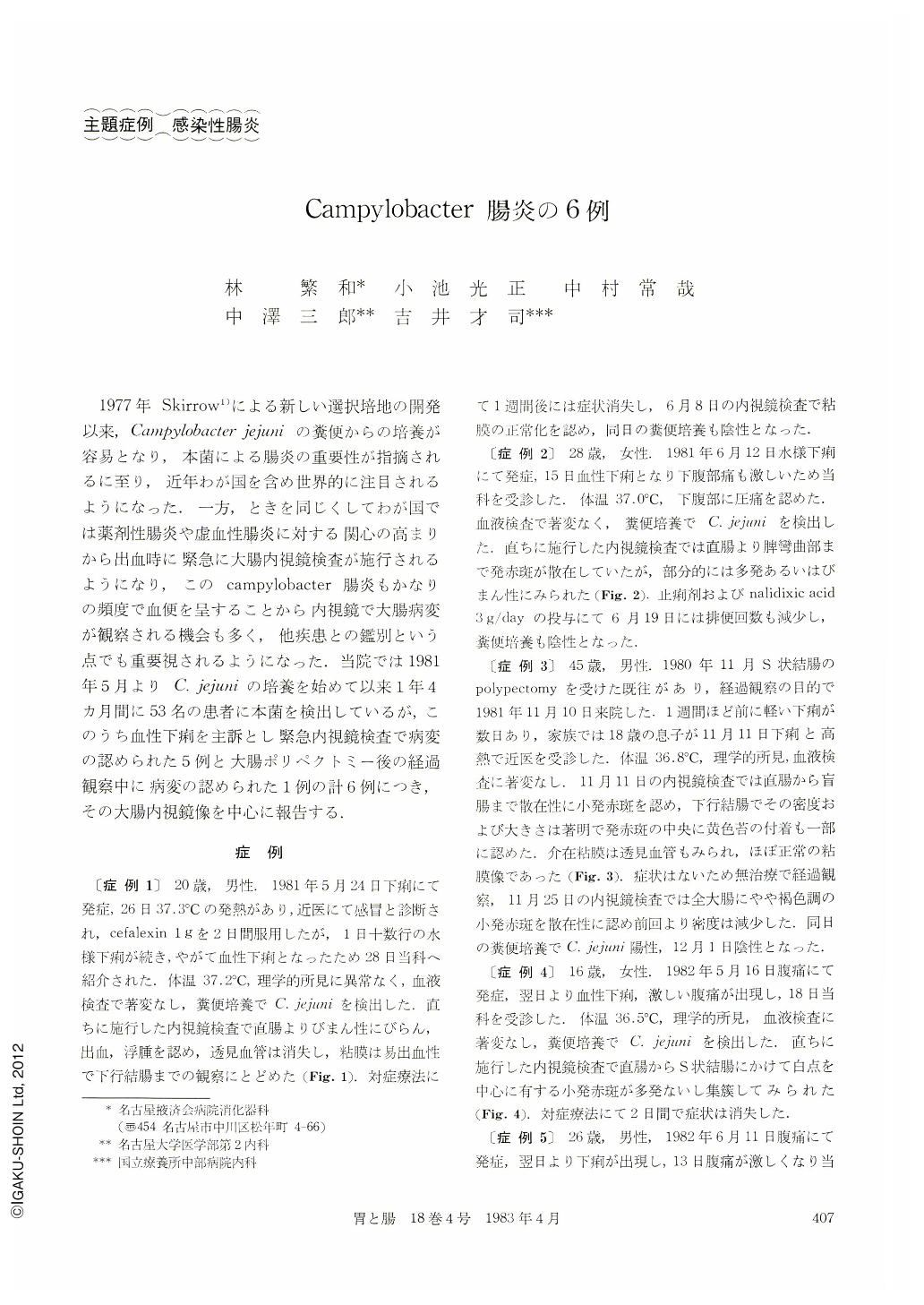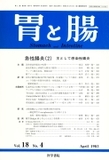Japanese
English
- 有料閲覧
- Abstract 文献概要
- 1ページ目 Look Inside
1977年Skirrowによる新しい選択培地の開発以来,Campylobacter jejuniの糞便からの培養が容易となり,本菌による腸炎の重要性が指摘されるに至り,近年わが国を含め世界的に注目されるようになった.一方,ときを同じくしてわが国では薬剤性腸炎や虚血性腸炎に対する関心の高まりから出血時に緊急に大腸内視鏡検査が施行されるようになり,このcampylobacter腸炎もかなりの頻度で血便を呈することから内視鏡で大腸病変が観察される機会も多く,他疾患との鑑別という点でも重要視されるようになった.当院では1981年5月よりC.jejuniの培養を始めて以来1年4カ月間に53名の患者に本菌を検出しているが,このうち血性下痢を主訴とし緊急内視鏡検査で病変の認められた5例と大腸ポリペクトミー後の経過観察中に病変の認められた1例の計6例につき,その大腸内視鏡像を中心に報告する.
In recent years culture of Campylobacter jejuni from the stool has become very easy, and since the importance of enteritis due to this bacteria has been pointed out, attention had been focussed on this disease all over the world including Japan. As Campylobacter enteritis is often accompanied with bloody stool colonoscopy is frequently performed. This disease has also drawn great attention since it must be differentiated from other similar diseases.
During one year and four months from May 1981 since the culture of C. jejuni was initiated at our hospital this bacteria was demonstrated in 53 patients. In this paper are reported six cases with lesions recognized by colonoscopy. Five out of six patients visited our hospital with a chief complaint of bloody diarrhea and urgent colonoscopy was performed. One patient had slight diarrhea one week before visiting us and endoscopy was done for the follow-up after polypectomy of the colon. Case 1 (Fig. 1) showed diffuse redness, erosions, bleeding and edema; Case 2 (Fig. 2) and 6 (Fig. 6) showed scattering, multiple or in parts diffuse changes. In Case 3 and 4 (Fig. 3 and 4) was seen an aphthoid lesion and in Case 5 (Fig. 5) were seen longitudinal reddening and erosions. In biopsy specimens was seen in all cases erosions and bleeding of the mucoca. In the lamina propria was seen inflammatory cell infiltration consisting chiefly of neutrocytes. Crypt abscess was recognized in four cases (Fig. 7). Endoscopic pictures of this diseases were variegated. In cases of diffuse changes it resembled those of ulcerative colitis, while changes in non-diffuse cases could be seen in other infectious colitis, drug-associated colitis and ischemic colitis. Final diagnosis mostly depended upon biological examination. Furthermore, pathophysiology of this disease remains still much unexplained, so that colonoscopic pictures of this disease in acute stage is considered important for elucidation its pathogenesis.

Copyright © 1983, Igaku-Shoin Ltd. All rights reserved.


